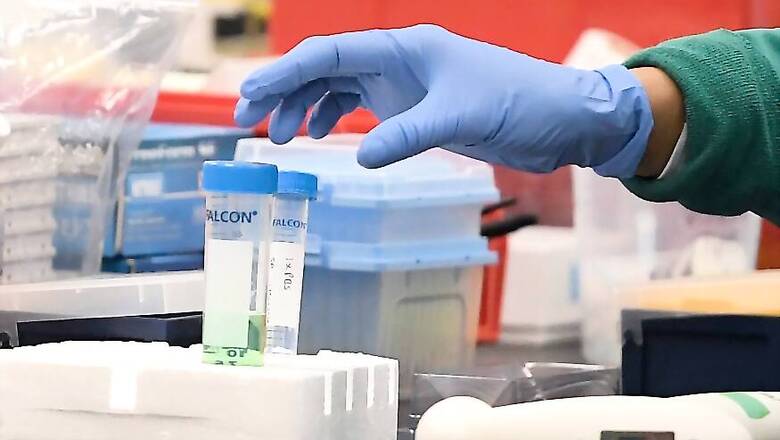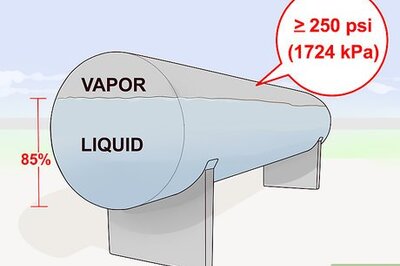As ICMR Sets August 15 Deadline for Covid-19 Shot, Here's How Long it Took to Develop Major Vaccines

views
As the total Covid-19 case count in India surpassed the 6.25 lakh-mark on Friday, the Indian Council of Medical Research (ICMR) set an ambitious launch date of August 15 for the public use of the Coronavirus vaccine being developed in partnership with Hyderabad-based Bharat Biotech.
ICMR sources have confirmed the authenticity of the letter, but say it was only meant for internal communication. Bharat Biotech has refused to comment on the letter. The date set for the launch of the vaccine is just a month and a half away.
“It is envisaged to launch the vaccine for public health use latest by 15th August 2020 after completion of all clinical trials. BBIL is working expeditiously to meet the target, however, final outcome will depend on the cooperation of all clinical trial sites involved in this project," a letter by ICMR Director General Balram Bhargava, accessed by News18, said.
Globally, more than 150 potential vaccines across several categories are under development with some of them already in the second and third phases of clinical trials.
Vaccine development takes time. It is a long process that involves research, extensive trials, and manufacturing – all with high chances of failure – and sometimes spans over decades. But with an urgent need to fight against the novel coronavirus, these timelines have been compressed in order to provide a vaccine by early next year.
A majority of the vaccines in use today were developed over the last century. Some of them took several years to come into existence to tackle critical public health crises while some are still under development decades after the research first began.
News18 studied the time it took to develop some of the major vaccines around the world.
Polio
The poliovirus was first identified in 1908 by Karl Landsteiner and Erwin Popper. After a few epidemic-grade outbreaks in the late 19th century, the contagious nature of poliovirus was discovered at the beginning of the 20th century even as polio outbreaks became more severe and frequent.
Two separate early attempts at developing a vaccine for polio met disastrous ends in 1935 with several subjects involved in the trials losing their lives while many others “were paralysed, made ill, or suffered allergic reactions to the vaccines”.
In 1949, almost two decades after it was proposed that there was more than one type of poliovirus, two researchers at Johns Hopkins School of Medicine published a paper identifying three types of poliovirus, an important breakthrough for the purpose vaccine development.
In 1952, the same year when the United States reported more than 57,000 cases of polio, American virologist Jonas Salk began initial human trials of the first inactivated (killed virus) polio vaccine (IPV). The trials were encouraging and it found that recipients produced antibodies to the virus type in the vaccine they were given.
Field tests of Salk’s polio vaccine were approved and held in April 1954 where 1.3 million children participated in it. The results, which found that the vaccine was 80-90 per cent effective against paralytic polio, were announced a year later and the vaccine was licensed and approved for widespread use.
However, a controversy erupted when thousands of vaccinated children developed paralytic polio and the vaccination campaign had to be suspended. It was later found out that it was due to a defective vaccine developed by a particular laboratory.
Another live-attenuated vaccine developed by Polish-American medical researcher Albert Sabin, which produced a faster response than Salk’s IPV, was later licensed in 1960. Salk’s IPV was phased out by the late 1960s only to make a comeback in the 1990s with an improved version.
Ebola
The virus was first identified in 1976. The same year, two related strains of the virus were found — Ebola Zaire and Ebola Sudan. Three other strains are now known to exist.
Vaccine development first began in the late 1970s. Since the outbreaks were rare and had been controlled quickly, commercial vaccine manufacturers demonstrated little urgency in advancing vaccines through clinical trials.
However, the process had to be fast-tracked in 2014 after the West Africa outbreak. The World Health Organisation termed the outbreak as a ‘global health emergency’ in August 2014.
Presently, there is no licensed vaccine for Ebola but "an investigational vaccine called rVSV-ZEBOV, which has shown to be safe and protective against the Zaire strain of the Ebola virus, is recommended by the Strategic Advisory Group of Experts on Immunisation (SAGE) for use in Ebola outbreaks caused by the Zaire strain of the virus, in the event where there is no licensed vaccine."
Even the Ervebo vaccine (the common name for rVSV-ZEBOV), developed by Merck, came into existence after many years of research and some fortunate breakthroughs spanning over more than a decade. It was also tested during the West African outbreak.
HIV
The Human Immunodeficiency Virus (HIV) was identified as the cause of AIDS (Acquired Immune Deficiency Syndrome) in 1984. At the time, the US Department of Health and Human Services had said that a vaccine would be available for testing within two years.
Initial clinical trials for the vaccine began in 1987 at the National Institute of Health (NIH) Clinical Center in Bethesda, Maryland.
Yet, more than three decades and several different trials later, a safe and truly effective vaccine is not available for HIV and there are a bunch of reasons behind this.
The issues range from lack of immune system response to the virus to the inability of using a killed or weakened HIV virus, which is the most often used approach for vaccine development, for the process.
A successful HIV vaccine may take more time and may not be available until 2020 or later.
Measles
Measles virus was first isolated by American physician Thomas Peebles on February 8, 1954, at a Boston lab headed by Nobel Laureate John Enders. Four years later, the first vaccine was tested. While each of the 11 vaccinated children developed antibodies, all but two children also developed a mild rash and measles-like symptoms.
In 1960, researchers again tested the vaccine on 23 children at a New York school and once again, it caused too many side effects. However, in a measles outbreak at the school six weeks later, none of the vaccinated children caught the disease.
Witnessing the side-effects, "doctors at Merck Sharp & Dohme laboratories worked with Enders’s Edmonston measles strain, hoping to develop a killed-virus vaccine that would result in fewer side effects than the live vaccine. Unfortunately, the study found no evidence that the killed-virus vaccine could offer protection against measles."
Eventually, in 1963, John Enders and his team, after proving its safety and efficiency, declared that their vaccine was capable of preventing the infection. The vaccine was licensed the same year for widespread use.
A Mumps vaccine was licensed in 1967 while a vaccine Rubella was licensed a year later.
Thus, building on the three studies, a combined trivalent measles, mumps, and rubella (MMR) vaccine, developed by Merck, was licensed by the US government in 1971.




















Comments
0 comment